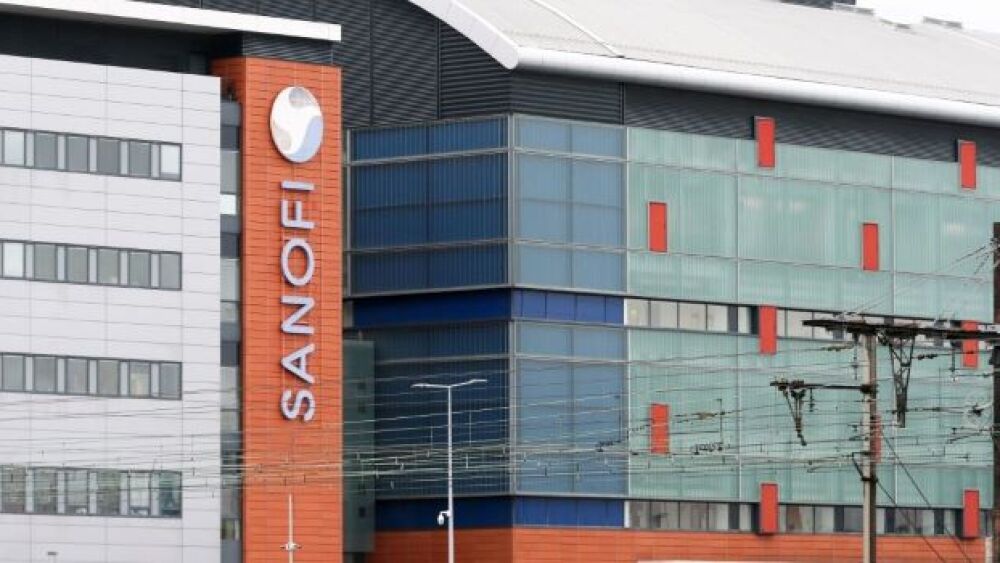Sanofi inked a pact with IGM Biosciences that could pass $6 billion. However, Sanofi CEO Paul Hudson’s pay had a drop of about 3.7%, according to the company’s annual filing.
Michel Stoupak/NurPhoto via Getty Images
It’s been a busy week for Sanofi. On March 29, the company inked a pact with IGM Biosciences that could surpass $6 billion. The two companies will collaborate on treatments for oncology, immunology and inflammation. IGM Biosciences focuses on engineered IgM antibodies with more binding sites than conventional IgG antibodies. They will focus on three cancer targets and three immunology/inflammation targets, with each target having a range of developmental and regulatory milestones and royalty splits.
Sanofi also reported its annual sales, emphasizing Dupixent (dupilumab) as a key growth driver. The company raised its sales peak projection to more than 13 billion euros for that drug alone. Sanofi’s immunology pipeline was a particular focus, made up of 13 next-generation medicines “designed to target mechanisms beyond type 2 inflammation.”
“Our long-term strategy goes well beyond Dupixent to deliver best-in-class medicines that break efficacy ceilings and help patients with chronic inflammatory disease achieve long-term disease modification,” John Reed, M.D., Ph.D., Sanofi’s global head of research and development, stated. “We are pursuing this ambition through precision medicine approaches that leverage our proprietary technologies, such as our NANOBODY platform that can help us address multiple therapeutic targets with one medicine. With approximately 21 clinical readouts expected across our promising immunology pipeline by the end of next year, it is an exciting time for our team working in Immunology R&D.”
Paul Hudson, Sanofi’s chief executive officer, managed a pretty good year even if the Paris-based company’s COVID-19 vaccines didn’t. Hudson’s pay was about $12.26 million (10.98 million euros), a drop of about 3.7%, according to the company’s annual filing. The dip was primarily due to a stock value drop of 360,750 euros. His salary was the same as the year before, 1.3 million euros, while performance-based bonuses climbed to 2.31 million euros, 177.6% of his fixed salary.
The company noted that the compensation it awards to its chief executive officers is benchmarked on those of 12 leading global pharmaceutical companies: Amgen, AstraZeneca, Bayer, Bristol Myers Squibb, Eli Lilly, GlaxoSmithKline, Johnson & Johnson, Merck, Novartis, Novo Nordisk, Pfizer and Roche. “In 2021, on the basis of the information published as of the date of this Annual Report on Form 20-F, median fixed compensation of the chief executive officers of the aforementioned twelve leading global pharmaceutical companies was in the region of €1,513,000; the median of the annual variable compensation awarded was in the region of €2,297,000; and the median of the long-term compensation awarded (whether equity-based or in cash) represented around 767% of fixed compensation.”
Hudson’s overall compensation fell within the first quartile of salary.
The only area the company had focused on for Hudson where he was marked as below expectations was “growth in key assets,” and that was due to the vaccines. Specifically, the company cited underperformance in the United States for its influenza vaccine and its overall vaccine business in China.
The company was otherwise happy with Hudson’s R&D operations, providing a score of 130% compared to the target, dubbing the company’s pipeline progress as “ahead of forecasts.” Last year, the company moved 10 drug candidates into the clinic, filed nine regulatory submissions, and received approvals for 10 drugs.
In September 2021, the company announced it had decided not to continue the development of its mRNA COVID-19 vaccine. It had announced positive Phase I/II interim results earlier but claimed that the Moderna and Pfizer-BioNTech vaccines had largely filled the market need, and it would shift its focus on mRNA to its newly created mRNA Center of Excellence.
On Wednesday, Sanofi offered a dual-tranche worth 1.5 billion euros. It comprises an inaugural issue of a sustainability-linked bond for about 650 million euros. This is associated with the company’s efforts to improve access to essential medicines in low- and lower-middle-income countries through its global health nonprofit unit. The other tranche is worth 850 million euros.
“A year of pioneering sustainable finance with our sustainability-linked revolving credit facilities, we further contribute to the development of the sustainable finance market through the successful pricing of our first sustainability-linked bond,” Jean-Baptiste de Chatillon, Sanofi’s chief financial officer, said. “We continue to make progress in our environmental, social and governance activities that are an essential part of our strategy and embedded into our business.”





